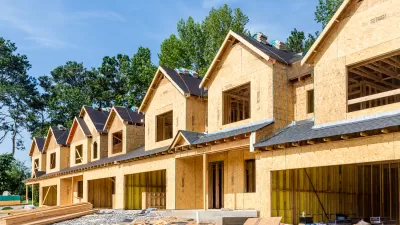Glenn Collins reports on what has to be the most innovative, and convenient, food-truck location in the country, the vertical food-truck court in the top floors of the 81-year-old, 19-story Starrett-Lehigh Building in West Chelsea.
Serving the 5,000 people who work in the Starrett-Lehigh building and approximately 1,000 daily visitors, the city's first vertical food-truck court was established by RXR Realty, the building's owner, to overcome the "paucity of lunchtime choices in the neighborhood, an industrial-looking stretch west of the High Line, between 11th and 12th Avenues."
The ability of the building to host such a gathering is no accident. "The fortresslike building, with its robust floor plates and concrete bays, was designed to bring supply trucks directly up to a congeries of production, storage and repackaging companies, for deliveries and exports. Now, most of the industrial tenants have departed in favor of advertising and design firms, as well as Martha Stewart Living, Hugo Boss and Tommy Hilfiger."
"The result is something like an elevator ride in a department store imagined by Willie Wonka. The other day on the 12th floor, Van Leeuwen Artisan Ice Cream was hawking its Michel Cluizel chocolate cones ($4). On Floor 15, the Treats Truck was dispensing its Chocolate Trucker Sandwich Cookies ($1.75) and the occasional Kitchen Sink Crispy ($3). On 17, Coolhaus Ice Cream Sandwiches was selling its decidedly vertical Three-Story concoctions - two scoops of ice cream served between two cookies ($9)."
FULL STORY: On the Highest Floors, Food Comes to the Workers

Pennsylvania Mall Conversion Bill Passes House
If passed, the bill would promote the adaptive reuse of defunct commercial buildings.

Planning for Accessibility: Proximity is More Important than Mobility
Accessibility-based planning minimizes the distance that people must travel to reach desired services and activities. Measured this way, increased density can provide more total benefits than increased speeds.

Fair Housing Cannot Take a Back Seat to ‘Build, Baby, Build’
If we overlook fair housing principles in the plan to build US housing back better, we risk ending up right back where we started.

LA Metro Board Approves New 710 Freeway Plan
The newest plan for the 710 corridor claims it will not displace any residents.

Austin’s Proposed EV Charging Rules Regulate Station Locations, Size
City planners say the new rules would ensure an efficient distribution of charging infrastructure across the city and prevent an overconcentration in residential areas.

Making California State Parks More Climate-Resilient
A recently released report offers recommendations for keeping state parks healthy and robust, including acquiring additional land for conservation and recreation.
City of Costa Mesa
Licking County
Barrett Planning Group LLC
HUD's Office of Policy Development and Research
Mpact Transit + Community
HUD's Office of Policy Development and Research
Tufts University, Department of Urban and Environmental Policy & Planning
City of Universal City TX
ULI Northwest Arkansas
Urban Design for Planners 1: Software Tools
This six-course series explores essential urban design concepts using open source software and equips planners with the tools they need to participate fully in the urban design process.
Planning for Universal Design
Learn the tools for implementing Universal Design in planning regulations.


























